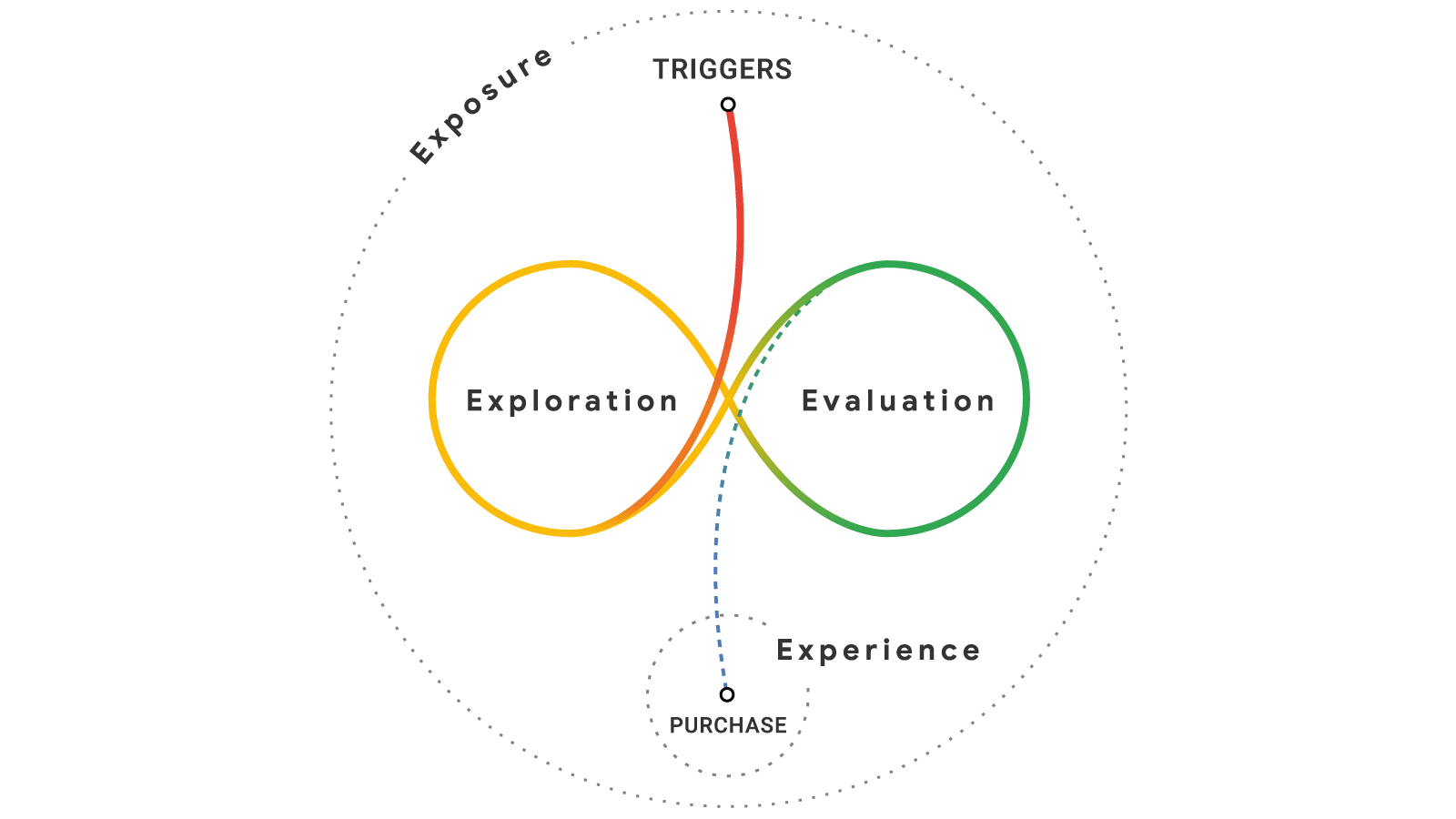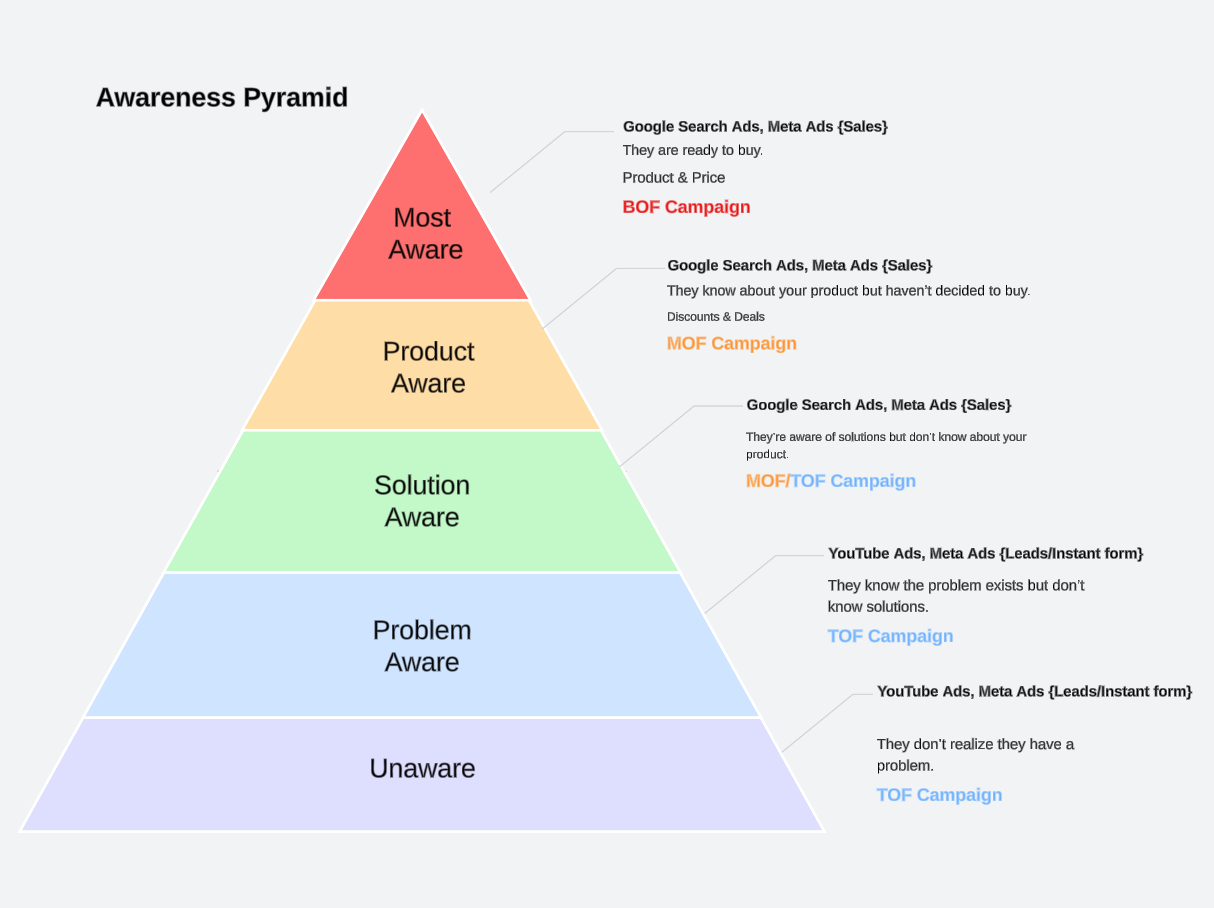Here's how E-Commerce Brands Turn Buyer's Behavior Into Sales

Awareness Pyramid vs Messy Middle
Most marketers still rely on the same old funnel: awareness - consideration - conversion. But in today’s digital world, buyers don’t move neatly from one step to the next. They scroll, compare, abandon carts, and come back weeks later.
This unpredictable behavior is what Google calls the Messy Middle the space where customers explore and evaluate options before making a purchase.

To win in this chaos, brands must combine two key ideas:
- The Awareness Pyramid (understanding buyer readiness)
- The Messy Middle (understanding buyer behavior)
Together, they form a framework that helps e-commerce businesses attract, guide, and convert more customers.
Step 1: Match Triggers to Awareness Levels
Every shopper starts at a different level of awareness:
- Unaware: They don’t yet know they have a problem.
- Problem Aware: They recognize the problem but don’t know the solution.
- Solution Aware: They’re exploring options.
- Product Aware: They’re comparing specific brands possibly yours.
Now layer in the Messy Middle. A Problem-Aware user might be browsing broadly (“best ways to sleep better”), while a Product-Aware one is deep in comparison (“Emma vs Simba mattress review”).
Your goal is to match their mindset:
- Unaware users: Use short, curiosity-driven videos or social posts to grab attention.
- Problem Aware: Educate them with blog posts, guides, or explainer content.
- Solution/Product Aware: Provide comparison charts, testimonials, or demos.
When your content matches their level of awareness, you make it easier for them to move forward and you earn trust without forcing a sale.

Step 2: Build Mental and Physical Availability
According to marketing researcher Byron Sharp, brands grow by being easy to notice and easy to buy not by building deep emotional loyalty.
That means:
- Mental availability: How easily your brand comes to mind.
- Physical availability: How easy it is to purchase from you.
In practice:
- Be visible on search, marketplaces, and social platforms.
- Use consistent, distinctive brand assets (logo, colors, tagline).
- Make buying effortless: fast site speed, simple checkout, clear delivery info.
Being distinctive instantly recognizable matters more than being “different.” People rarely analyze your message, but they remember the brand that’s easiest to recognize and trust.

Step 3: Focus on Light Buyers, Not Just Loyal Fans
Research shows most growth comes from light buyers, those who buy infrequently or switch between brands not from heavy, loyal customers.
That’s why broad reach and brand visibility matter more than perfect loyalty programs. Keep your brand in front of those occasional buyers, so when they enter the messy middle, you’re already familiar.
Loyalty programs are nice, but they often reward people who would have bought anyway. Growth happens when new or light buyers think of you first.
Step 4: Simplify the Decision Loop
Inside the Messy Middle, people use mental shortcuts reviews, star ratings, authority cues, or urgency to simplify decisions.
Make those cues work for you:
- Highlight reviews and testimonials to show social proof.
- Display trust badges, certifications, or “as seen in” logos.
- Offer free returns or delivery transparency to remove hesitation.
- Use urgency signals (like “Only 3 left”) ethically to nudge action.
Every friction point you remove keeps customers from bouncing to competitors.
Conclusion
The Awareness Pyramid helps you understand who your buyers are. The Messy Middle reveals how they make decisions.
Together, they help you create a marketing strategy that attracts attention, builds trust, and simplifies the path to purchase. Forget chasing loyalty, build visibility, simplicity, and trust, and you’ll dominate the middle where buying decisions truly happen.


Comments